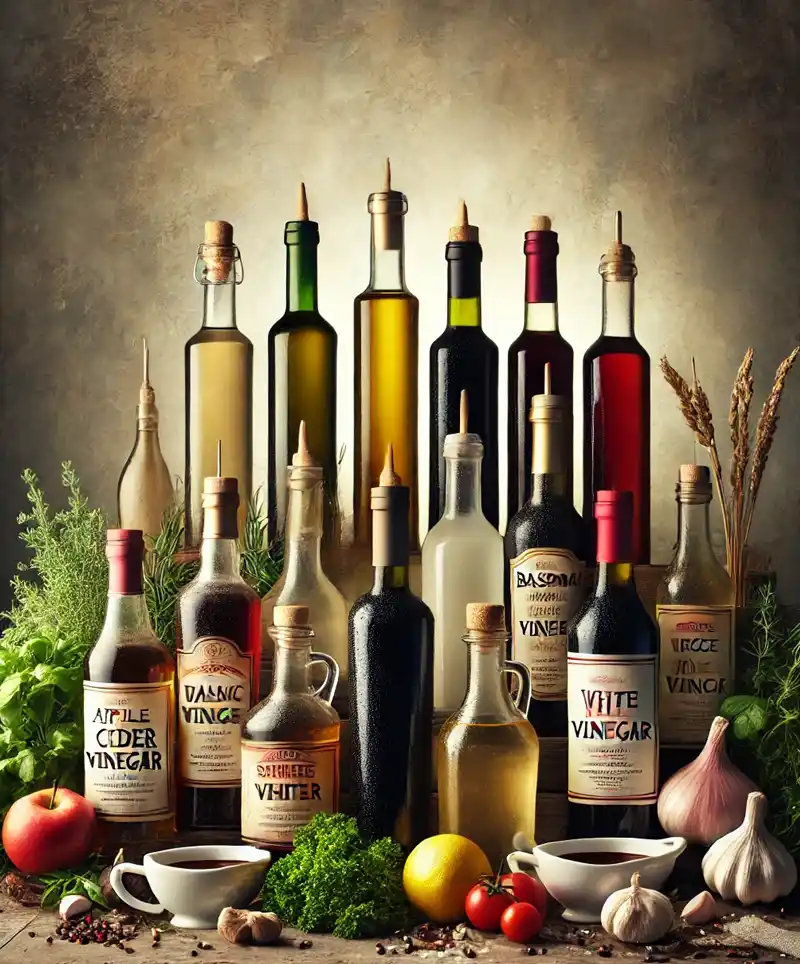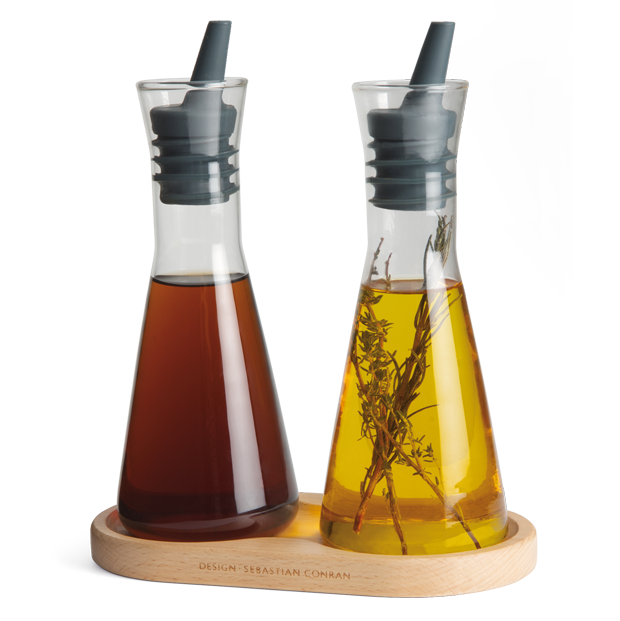Celebrating the Surprisingly Versatile Sour Sidekick
National Vinegar Day, celebrated on November 1st, is a toast (though you might want something sweeter to sip on) to one of the most versatile liquids in the culinary and household arsenal. From salad dressings and marinades to glass cleaners and science experiments, vinegar has found a way into nearly every aspect of our lives. National Vinegar Day pays homage to this tangy marvel, and it’s time to look at why vinegar deserves a spot on our calendars—and maybe a little more respect in our lives.
Where Vinegar Came From (and Why It Stuck Around)
Vinegar’s origin story is one of happy accidents. Literally derived from the French words “vin aigre,” meaning “sour wine,” vinegar was most likely discovered when wine was left too long and began to spoil. Rather than toss it, ancient civilizations discovered that this tangy transformation wasn’t half bad. In fact, some say the Babylonians were the first to purposefully make vinegar from dates, while the ancient Egyptians, Greeks, and Romans all developed their own versions, using it in cooking, medicine, and even for preserving food.
Vinegar also proved invaluable in times before refrigeration. Anything pickled, from cucumbers to eggs, relied on vinegar’s acidity to ward off the microbial bad guys. And because it has such staying power, vinegar became a household staple worldwide. Today, the diversity of vinegars—apple cider, balsamic, rice, red wine, malt, and white, to name a few—means that there’s a vinegar for every purpose, whether it’s adding a punch to your plate or clearing stubborn stains.
 A Tour de Vinegar
A Tour de Vinegar
National Vinegar Day isn’t just about celebrating “vinegar” as a monolithic substance; it’s about appreciating the vast world of vinegars, each with its own flavor profile, origin, and fan base.
-
Apple Cider Vinegar: The Instagram influencer of vinegars. Made from fermented apple juice, this vinegar is touted for health benefits, like aiding digestion and boosting immunity. Whether or not it’s a miracle cure is still up for debate, but it definitely makes a mean vinaigrette and pairs beautifully with anything remotely “apple.”
-
Balsamic Vinegar: The fancy, centuries-old Italian addition to the family, balsamic vinegar has a rich, dark color and a sweetly sour flavor that only improves with age. Drizzle it over strawberries or mix it with olive oil for a luxurious dip, and you’ll understand why people pay top dollar for the aged variety.
-
Rice Vinegar: This mild, slightly sweet vinegar from East Asia is the secret behind sushi’s signature flavor. It’s gentle on the palate and doesn’t overpower the flavors it complements, making it ideal for marinades, pickling, and Asian-inspired dishes.
-
White Vinegar: The no-nonsense workhorse of the vinegar world, white vinegar is powerful enough to clean your windows, soften your laundry, and even unclog a sink. It’s less glamorous than its aged, fruity cousins, but there’s no doubt it’s indispensable.
Each vinegar brings something unique to the table—literally. And for the vinegar connoisseur (a title surely only held by the brave), there’s no limit to what you can explore.
From the Kitchen to the Medicine Cabinet
National Vinegar Day shines a light on the diverse applications of vinegar, proving that a little acidity can go a long way.
- In the Kitchen: Vinegar’s main claim to fame is its culinary prowess. Beyond its starring role in pickling, vinegar is a secret ingredient in salad dressings, marinades, and sauces. It brightens the flavors of soups and stews, tenderizes meats, and can even add a zing to baked goods like buttermilk pancakes or quick breads. And if you’re looking to impress at the next BBQ, try a vinegar-based sauce on pulled pork—vinegar and meat make quite the dynamic duo.
- In Household Cleaning: That bottle of white vinegar in the pantry does more than cut the grease on your stovetop. Vinegar is a natural, biodegradable cleaner that can tackle everything from bathroom mildew to sticky residues. Mix equal parts vinegar and water, and you’ve got yourself an all-purpose cleaner that’s safe around pets and kids. Some say it even helps with pest control—although don’t expect a spray of vinegar to charm your neighbor’s nosy cat.
- In Health and Beauty: Apple cider vinegar, in particular, has become the darling of home remedies. Though not all claims are backed by science, it’s reputed to aid digestion, improve skin, and help balance pH levels. Some brave souls even take a daily shot of the stuff. Just be warned: the sourness packs a punch, and it’s definitely an acquired taste. Beauty enthusiasts also use diluted vinegar as a toner or hair rinse for its shine-boosting effects.
- In Science Experiments: Vinegar has even made its mark in the realm of science. Remember that fizzy volcano from grade school? That was vinegar and baking soda at work, showing off their bubbly chemistry. From demonstrating basic chemical reactions to creating homemade “lava lamps,” vinegar is the ultimate teacher’s pet in any home science project.
A Few Vinegar Fun Facts
You might think vinegar doesn’t come with a lot of humor, but this sour liquid has a surprising amount of quirk:
-
Vinegar was once used as a deodorant. Before the days of powder-fresh sprays, people used vinegar to mask body odor. Some athletes still use apple cider vinegar to soothe sore muscles.
-
Cleopatra made a bet involving vinegar. Legend has it that Cleopatra once wagered that she could host the most expensive dinner in history. She dissolved a priceless pearl in vinegar and drank it. Now that’s a pricey cocktail.
-
Vinegar has historical military applications. The Roman soldiers used vinegar to clean wounds and also drank a diluted version to quench thirst on long marches, calling it posca. There’s something to be said for a vinegar that was hardcore enough for the Roman legions.
Ways to Celebrate National Vinegar Day
How can you pay homage to vinegar’s time-honored tradition? Here are a few ideas that won’t leave you sour:
-
Experiment in the Kitchen: Try a new recipe featuring vinegar! Whether it’s pickling veggies, making a vinegar-based BBQ sauce, or drizzling balsamic over fresh berries, see what magic vinegar can work in the kitchen.
-
Create Your Own Vinegar Cleaner: Ditch the chemical cleaners for a DIY vinegar solution. Mix it with water and a few drops of essential oil for a fresher scent, and tackle household grime in vinegar style.
-
Taste-Testing Vinegar Varieties: Host a vinegar tasting session (yes, they exist) where you sample everything from white to red wine vinegar, balsamic, and rice vinegar. Who knows? You might discover a newfound respect for the world of “sour wine.”
-
Craft Your Own Infused Vinegar: Infused vinegars are delicious and easy to make. Add herbs like rosemary or thyme, or fruits like raspberries or citrus peels, and let them steep. These make for fantastic, edible gifts or a way to elevate a meal at home.
Vinegar may not be as flashy as fine wine or as sweet as honey, but National Vinegar Day is a reminder that sometimes the simplest ingredients are the most versatile. After all, how many other pantry items can whip up a dressing, clean a countertop, aid digestion, and even work as a science project?
So this November 1st, raise a metaphorical glass to vinegar—the tart, tangy liquid that has been adding a splash of something special to life for centuries. You might never sip it neat, but you can’t deny that vinegar is a keeper. And as any seasoned chef or neat freak will tell you, a good vinegar is worth its weight in sour grapes.
Please Share our Content






 A Tour de Vinegar
A Tour de Vinegar








 "Sláinte!" is a traditional Irish expression used as a toast, equivalent to "Cheers!" in English.
"Sláinte!" is a traditional Irish expression used as a toast, equivalent to "Cheers!" in English.